Setting up an Outlook rule for a shared inbox helps the emails reach an ordained destination ― where the email needs to show up.
To clarify the best value of Outlook rules for a shared mailbox, imagine yourself as a sales executive who has access to a shared email. And an Outlook rule is decorated as follows — whenever an email from another salesperson appears on the shared mail, only the sales executives get notified.
Now, if the Outlook rule for that particular event doesn’t work automatically, things might get a lot messy.
That’s where this article comes to the rescue. In case your shared mailbox isn’t compatible with running Outlook rules automatically, reading this four-step guide until the end will be incredibly worthwhile.
So, let’s get to the fixing process without wasting your time.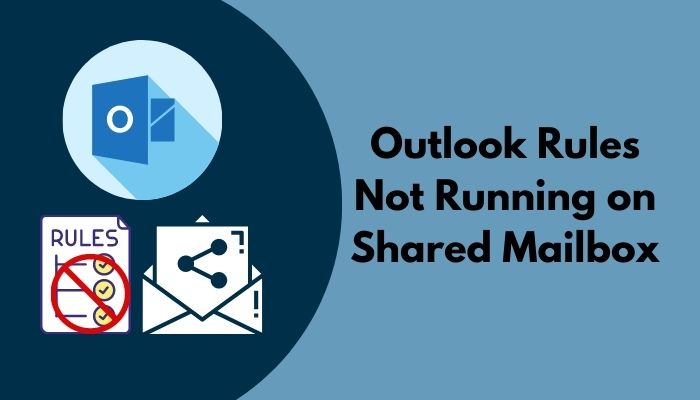
Exceeding the default rules quota size- 265 KB is the primary reason rules don’t work automatically on a shared mailbox. If you merge surpassing 30 rules in a rule folder, the result will be similar. However, when the rules aren’t turned on or optimized improperly, they won’t run automatically.
Don’t be alarmed looking at these complex situations; solving the rules that don’t run automatically will be effortless once you finish reading this article.
Before you move on to setting a full-functional rule on your shared mailbox, make sure your internet connection is up and running. Then proceed to the following section.
Follow our guide to fix Outlook can’t create file error when opening attachment.
Here are the methods to resolve Outlook rules not running on shared mail:
The initial stage of resolving the debilitated Outlook rule for a shared email is successfully merging the mailbox in your desktop Outlook client.
And if you follow the techniques below, you’ll be able to do that easily.
Here’s the procedure to add your shared mailbox account to the Outlook client:
- Launch Outlook client from your computer.
- Go to the File tab from the dashboard and click on Account settings > Account Settings.
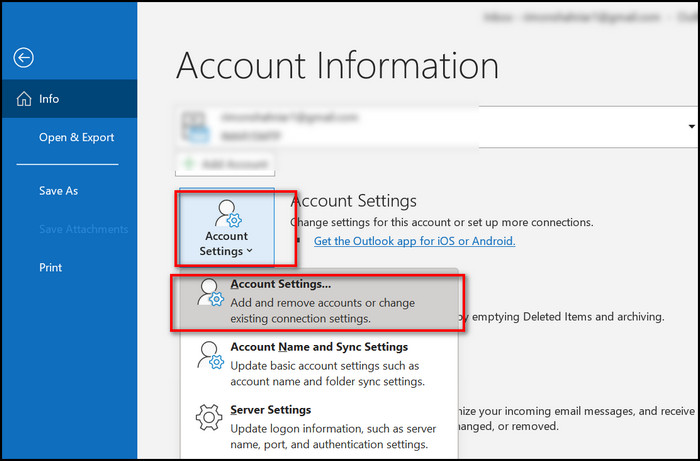
- Select New in the Email tab.

- Enter the shared email address in the following window.
- Insert your own email address password, as there’s no dedicated password for a shared email.
- Click on Finish after you enter valid credentials.
That’s it. You’ve efficiently added a shared mailbox account to the Outlook client. If there’s any rule embedded inside the communal mailbox, that should run automatically after merging. Check out the following solutions in case this tweak couldn’t resolve the issue.
Also, check out our separate post on disable Outlook deleting confirmation message.
Setting up a new rule for the exchange mailbox is slightly different from creating a client-side rule. But, with these tricks, you’ll be able to do so without any complicacy.
Here are the steps to assign a new rule for exchanged mailbox in Outlook:
- Launch Outlook and go to the File tab.
- Click on Manage Rules & Alerts.
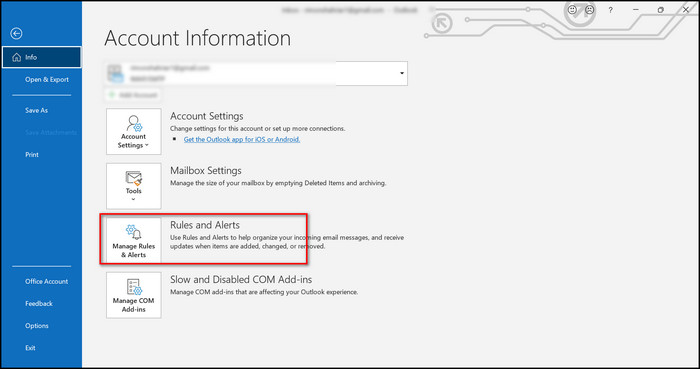
- Move to the email rules tab.
- Click on the shared mailbox from the menu labeled; apply changes to this folder.
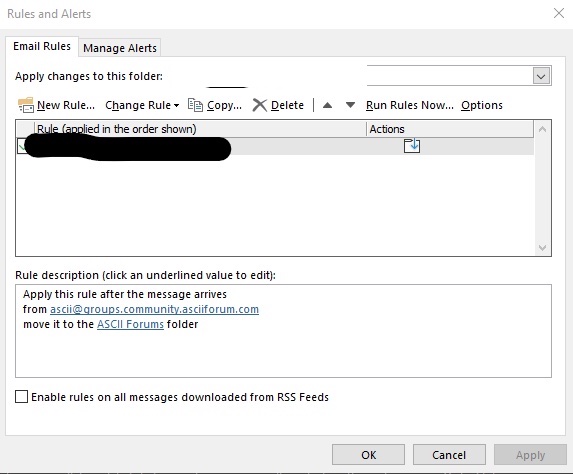
- Select New rule and create the rule.
Check whether the new assigned rules are working or not. You can delete the previous rules if they are not running automatically.
Check out our separate post on how to view message headers in Outlook.
You can resolve the rules that are failing to run automatically using the Outlook web version. Just open your browser and visit Outlook web. Follow further instructions to resolve on your own.
Here are the steps to fix exchanged rules with Outlook web:
- Log in to Outlook web with valid credentials.
- Click on the gear icon from the dashboard.
- Select View all Outlook settings.
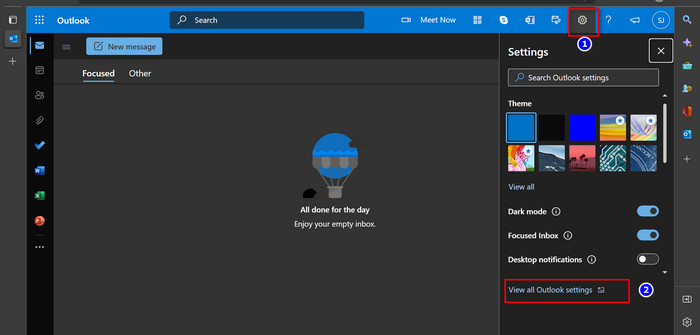
- Move to Emails > Rules.
- Click on If rules aren’t working, generate a report.
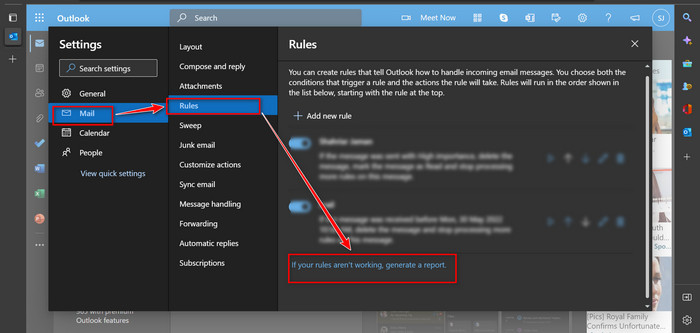
You’ll receive an InboxRules.txt file in your mail. Verify the report and undo the irregularities you find on that report.
Note: You won’t get the mail without having admin access to the exchanged mailbox.
4. Contact Microsoft Support
In case none of the solutions from above resolved your exchanged mail issue, getting in touch with Microsoft support would be a wise decision.
Click on Get support once you land on the support page. That will redirect you to the get help page. Describe your problem within 250 words, and shortly, you’ll get a response from the Microsoft team.
These are the solutions you should implement whenever you encounter Outlook rules for shared emails that are not working correctly.
Creating a rule for Outlook web shared mailbox is a bit different from the desktop client. It’s necessary to set up a mailbox rule when that rule on the desktop client declines to function properly.
Here’s the procedure to set up a shared mailbox rule for Outlook web:
- Launch Outlook on your web browser and log in.
- Click on the cog icon (settings icon) from the dashboard.
- Expand Automatic processing and click on Inbox and sweep rules.
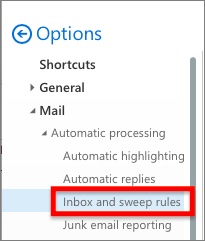
- Click on the Plus sign in the inbox rule section.
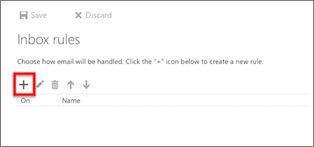
- Set the rule as your preference and click ok to finish the wizard.
After setting up the rule, check whether the issue has been resolved or not. If you follow the steps as explained, Outlook rules will function automatically.
It’s reasonable that some questions appeared on your mind after reading this article. Check out the following Q&A section to clear out the confusion.
Check out the easiest way to Enable Read Receipts In Outlook.
Frequently Asked Questions
Do rules work on shared mailboxes?
Yes, you can create new rules on exchanged mailboxes as a similar process for your inbox.
Why are my Outlook 2010 rules not running automatically?
Launch Outlook > Go to Files > Rules & Alerts > Tick on the rules that are disabled. From now on, outlook rules will function properly.
How do I set up an automatic reply for a shared mailbox in Outlook?
Login to OWE > Locate users > Active users > select the user who can manage the mailbox. Then go to settings > Automatic replies > set the reply.
Wrapping Up
A shared mailbox allows multiple users to receive and send emails from the same email address. Besides having fruitful results, a shared mailbox encounters massive drawbacks when inbox rules get messed up.
You won’t face those difficulties if you implement the solutions that I explained here. Then again, if anything feels complicated solving this weird scenario, I’m just a comment away. Feel free to ask anything relevant to this topic.
Till then, peace!




